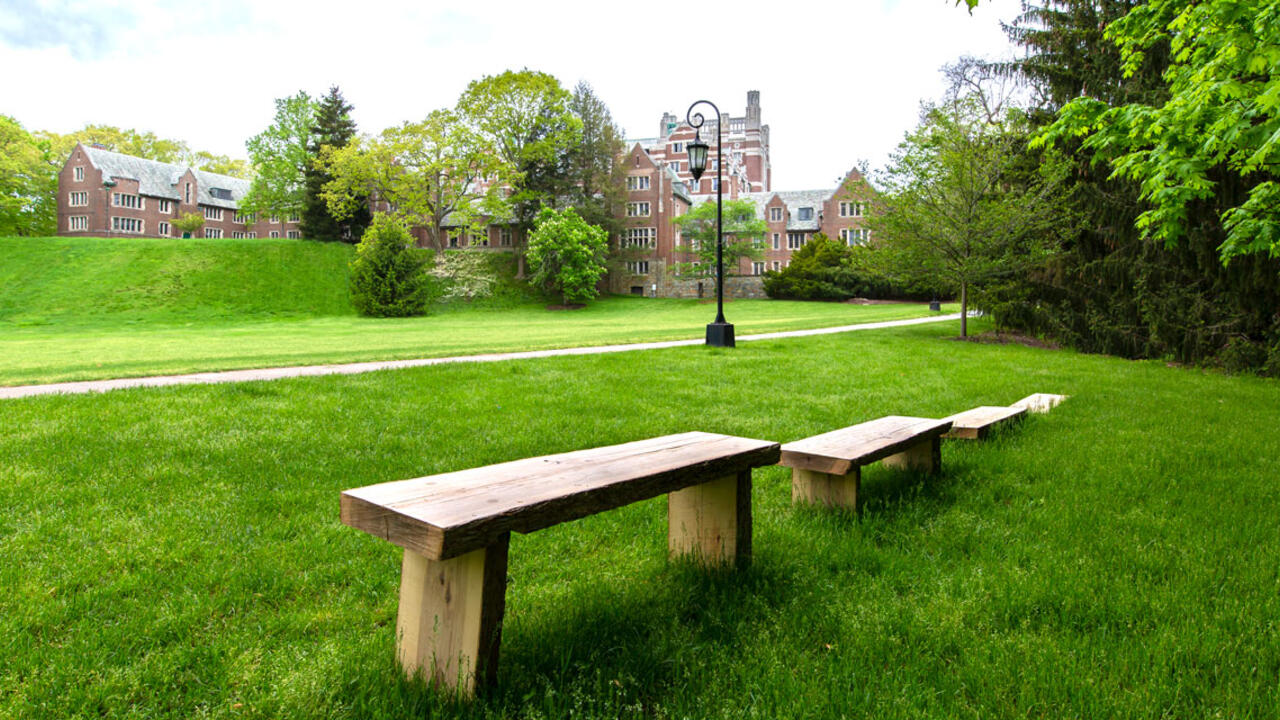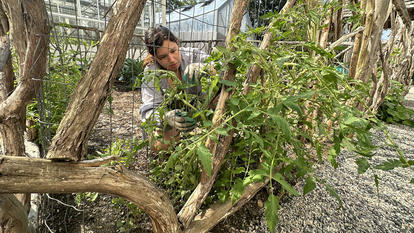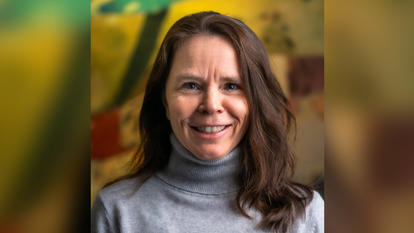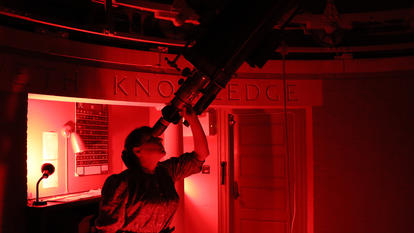Wellesley Students Build Benches Made from Recycled Campus Trees

Walk along the path bordering Severance Green and you will see four benches constructed from hickory trees that had fallen on campus. They might have ended up as mulch, but instead, in an example of sustainability, reuse, and functional design, the trees were returned to the campus landscape to serve a new purpose.
In collaboration with the Paulson Ecology of Place Initiative and Andrew Mowbray, lecturer in art, students in the spring Spatial Investigations class used a circular saw, chisels, rasps, drills, and files to build the four benches. Wellesley’s Grounds Department provided the class with the trees and assisted by cutting them into manageable slabs that the students could work with.
Students viewed several different designs of benches and scouted locations on campus before settling on four slab-style benches of varying heights. The number symbolizes the four seasons and the four years they spent at Wellesley; the different heights echo the stepped walls of the nearby Jewett Art Center.
“Creating a seating and gathering area in the landscape was a goal from the beginning of the project,” said Mowbray. “If you view the arrangement from the perspective of just beyond the tallest bench, they visually appear as one slab.”
Kayli Balin ’20 enjoyed building the benches and assembling the legs. “Using power tools, my hands, and my mind to put these benches together was the most enriching part,” she said. “I learned a lot about woodcrafting and construction that I think is really useful regardless of major, interests, or artistic ability.”
Suzanne Langridge, director of the Paulson Initiative, pointed out the sustainability aspect of the project. “The wood used for the benches not only reuses but also upcycles the larger logs into an art installation as well as functional furniture,” she said. “The wood is from a known, local source, milled on site, and placed with thought and understanding of the landscape and built environment.”



